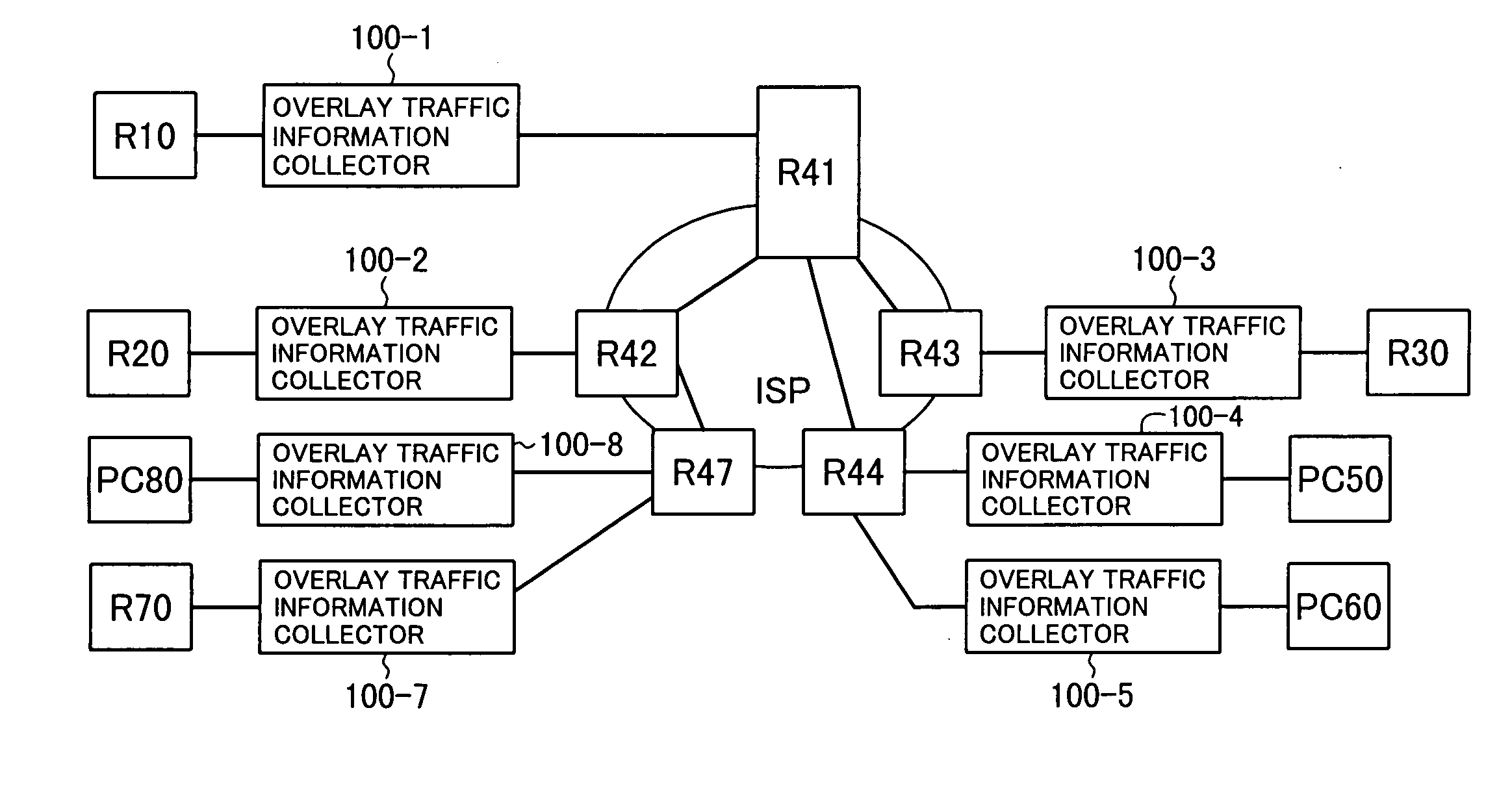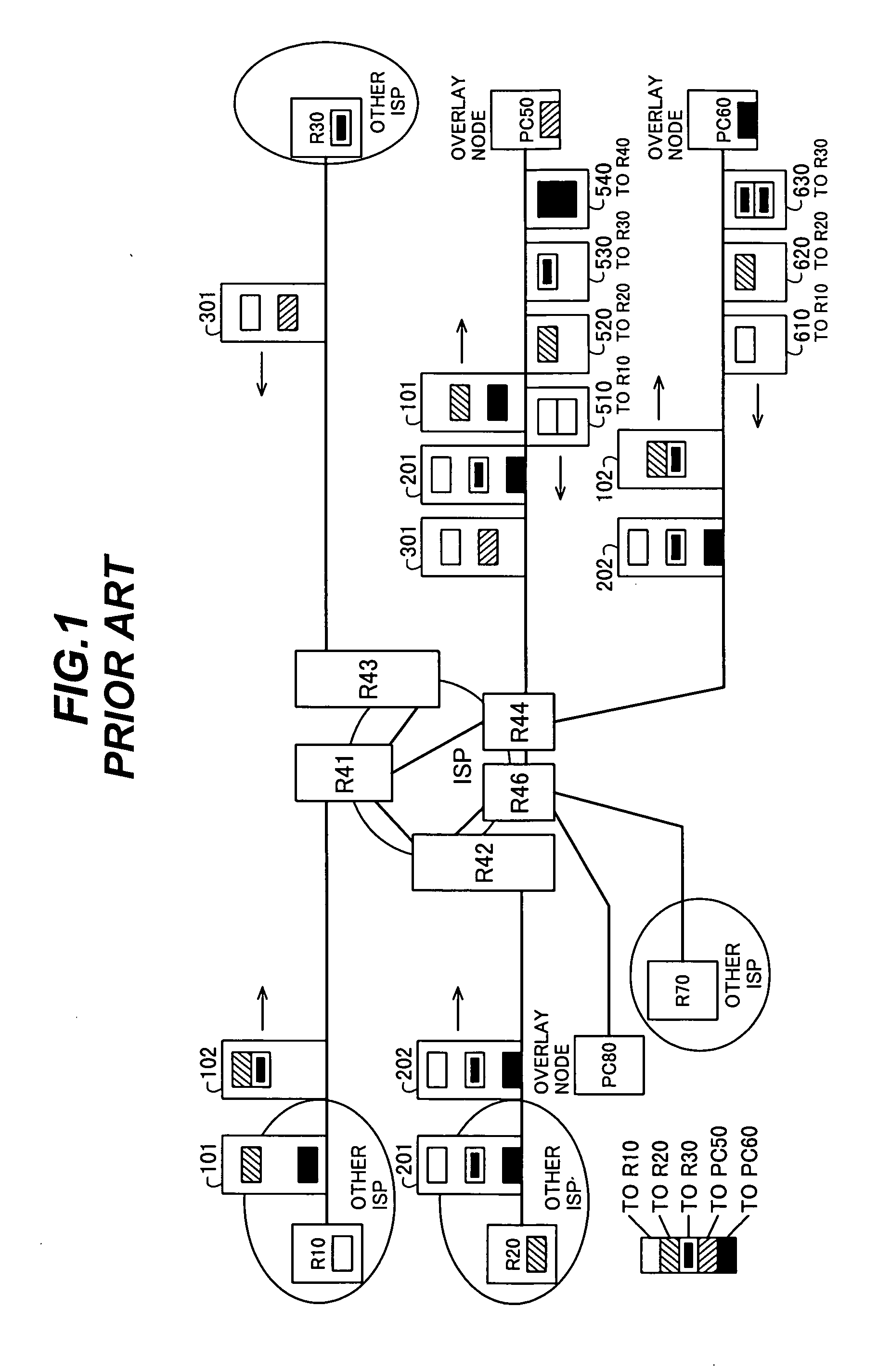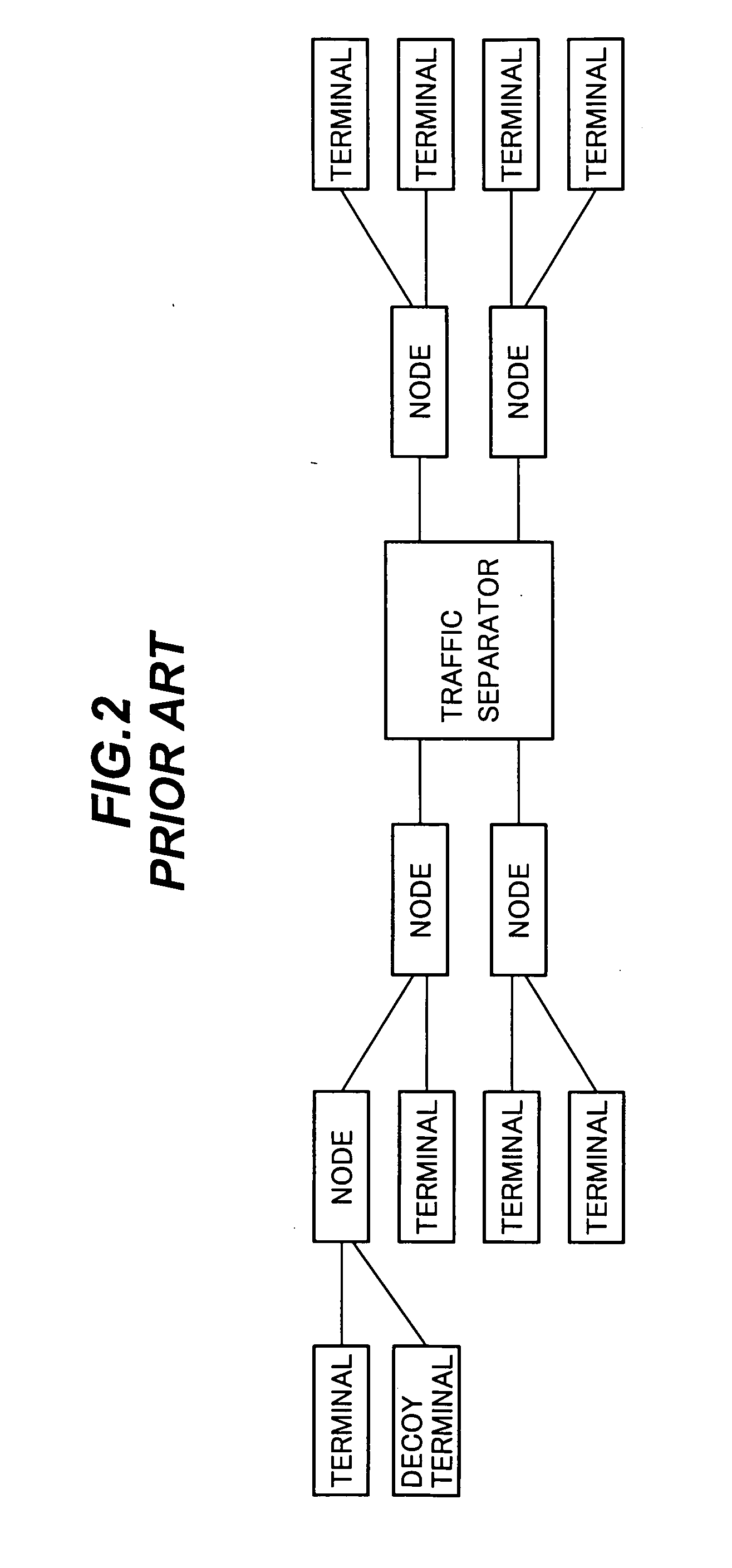Overlay network traffic detection, monitoring, and control
a technology of overlay network and traffic detection, applied in the direction of data switching network, instruments, digital transmission, etc., can solve the problems of preventing other users from communicating, affecting the detection of overlay network traffic, and difficult to discover the existence of overlay network
- Summary
- Abstract
- Description
- Claims
- Application Information
AI Technical Summary
Benefits of technology
Problems solved by technology
Method used
Image
Examples
first embodiment
[0044]The equipment in the first embodiment includes a plurality of overlay traffic information collectors 100-1, 100-2, 100-3, 100-4, . . . as shown in FIG. 3. A general one of these overlay traffic information collectors 100-1, 100-2, 100-3, 100-4, . . . will be referred to as an overlay traffic information collector 100. Each of these overlay traffic information collectors 100 may be mounted in or on a router, for example, or in a personal computer belonging to a cooperating subscriber, to receive traffic in transit on a network.
[0045]FIG. 4 shows overlay traffic information collectors 100-1, . . . , 100-5, 100-7, 100-8 installed in the network that was shown in FIG. 1. Each overlay traffic information collector is preferably located between two routers belonging to different ISP networks or between a router belonging to an ISP network and a subscriber's personal computer. Overlay traffic information collector 100-1, positioned between routers R41 and R10, is an example of the fo...
second embodiment
[0120]The overlay traffic detection, monitoring, and control system in the second embodiment of the invention will now be described.
[0121]Referring to FIG. 8, in addition to the overlay traffic information collectors used in the first embodiment, the second embodiment employs a node including a probe information transmitter-receiver 200. The probe information transmitter-receiver 200 has an overlay function enabler 210, a control unit 213, and a communication unit 214.
[0122]The system in the second embodiment functions particularly effectively on file-sharing overlay networks. The node including the probe information transmitter-receiver 200 functions as a decoy in such networks, but differing from the prior art, the probe information transmitter-receiver 200 can produce information about overlay network nodes to which the decoy terminal is not directly connected, even about nodes with which the personal computer on which the probe information transmitter-receiver 200 is installed h...
third embodiment
[0136]The overlay traffic detection system and monitoring and control system in the third embodiment will now be described.
[0137]Referring to FIG. 10, the third embodiment replaces the overlay traffic information collectors used in the first and second embodiments with enhanced overlay traffic information collectors 300. FIG. 10 shows two enhanced overlay traffic information collectors 300-1, 300-2. Overlay traffic information collector 300-1 includes a mirroring device 311, packet passer 312, traffic measurement unit 313, traffic profiler 314, communication unit 315, and correlator-evaluator-thresholder 316, which are generally similar to the corresponding elements in the overlay traffic information collector 100-1 in FIG. 3, and also includes a keyword measurement unit 317 and a similarity evaluator 318. Overlay traffic information collector 300-2 has a generally similar internal structure (not shown), including the keyword measurement unit and possibly the similarity evaluator.
[0...
PUM
 Login to View More
Login to View More Abstract
Description
Claims
Application Information
 Login to View More
Login to View More - R&D
- Intellectual Property
- Life Sciences
- Materials
- Tech Scout
- Unparalleled Data Quality
- Higher Quality Content
- 60% Fewer Hallucinations
Browse by: Latest US Patents, China's latest patents, Technical Efficacy Thesaurus, Application Domain, Technology Topic, Popular Technical Reports.
© 2025 PatSnap. All rights reserved.Legal|Privacy policy|Modern Slavery Act Transparency Statement|Sitemap|About US| Contact US: help@patsnap.com



